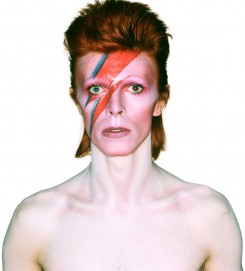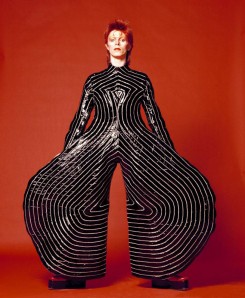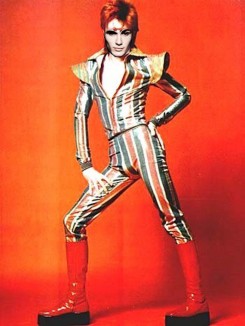Walking up the steps to the Art Gallery of Ontario (AGO), I wasn’t sure what I’d find. David Bowie has all the ingredients of a fascinating exhibit, celebrating a man my father deemed “the original Lady Gaga.” I can recall us going through old album covers together, his eyes sparkling as his brain relived the rebellion and recklessness of his youth.
I was intrigued. I wanted to know what kind of person could do that to someone — what lit that spark.

MEDIA PHOTO
From the moment I put on the exhibit’s interactive, intuitive headphones (they respond as you travel from section to section — no more pushing buttons), a theatrical hum filled my ears, as if to immerse me into Bowie’s mind. The exhibit itself is sectioned off into various rooms in order of influence, age, and era. It was here, taking the first few steps, where I began to see where my father’s adoration came from. Bowie, a trendsetter from the moment of inception, seemed to always be searching for something bigger. At one point debating the idea of full-fledged Buddhism, he declared his goal was to become a “trendy person, rather than a trend.”
In a world peppered with Internet celebrities, child stars, and reality television, Bowie couldn’t be more right. That’s one aspect which struck me as I walked from room to room — Bowie’s vulnerability. Sure, he may look like an alien, with his unique eyes and bone structure holding court from miles away. He may be very different indeed — yet he holds the same desire for originality, fighting the same demons many of us face in life. When asked about his reason for acquiring such fame, Bowie was recorded saying, simply: “I wanted to be well-known. I wanted to turn people on to new things.”

MEDIA PHOTO
Bowie’s endured failure, rose above it, and countered bowing down to the masses by creating a new world with new identities to dominate. Whether he is Bowie or Ziggy Stardust, by claiming to be somebody else he could be himself. In a time when rock and roll was raw and rugged, Bowie would add Kabuki-inspired makeup, vague, embellished wording, and costumes that continue to shape the styles of today. He saw inspiration and influence in everything, and whether you follow him or not, Bowie shaped us.
His big break occurred during the moon landing of July 1969, when the BBC aired his single, “Space Oddity” alongside the miraculous footage. It seems that on that day, two things skyrocketed into our living rooms: the moon and, perhaps, the man whose mind resided there.
Bowie lived for creation in all forms, citing A Clockwork Orange and 1984 as major literary influences. Between music videos, songs, and performances, he refused to exist within a single dimension. The plethora of costumes and drawings shown in the exhibit provide a peek into what rock used to be — a time when individuality was the only option, and social networking had nothing to do with posting a “selfie” on Instagram. Things were either brutally honest or brutally ethereal — you couldn’t claim one as the other.

MEDIA PHOTO
In the exhibit, a few things resonated with me. Bowie had a fondness for a program called the Verbasizer, which took paragraphs, sentences, and bits of news and scrambled then into new phrases. Sometimes, these compilations would speak to him such that it enabled him to write a song, full of lyrics with meaning for the listener. That is the beauty of Bowie, his words are vehicles that take you somewhere untravelled.
I could write pages on Bowie’s impact on our generation, on his androgynous style and the importance of celebrating it. I could devote paragraphs to the beauty in his layered music, his synthesized beats and cultural trailblazing. But I won’t, because I want you to experience it for yourself. Find refuge in David Bowie’s fantasy, find comfort in his life.
His world is your world, and I strongly advise that you inhabit it.
“David Bowie is” is running now until November 27 at the AGO.


